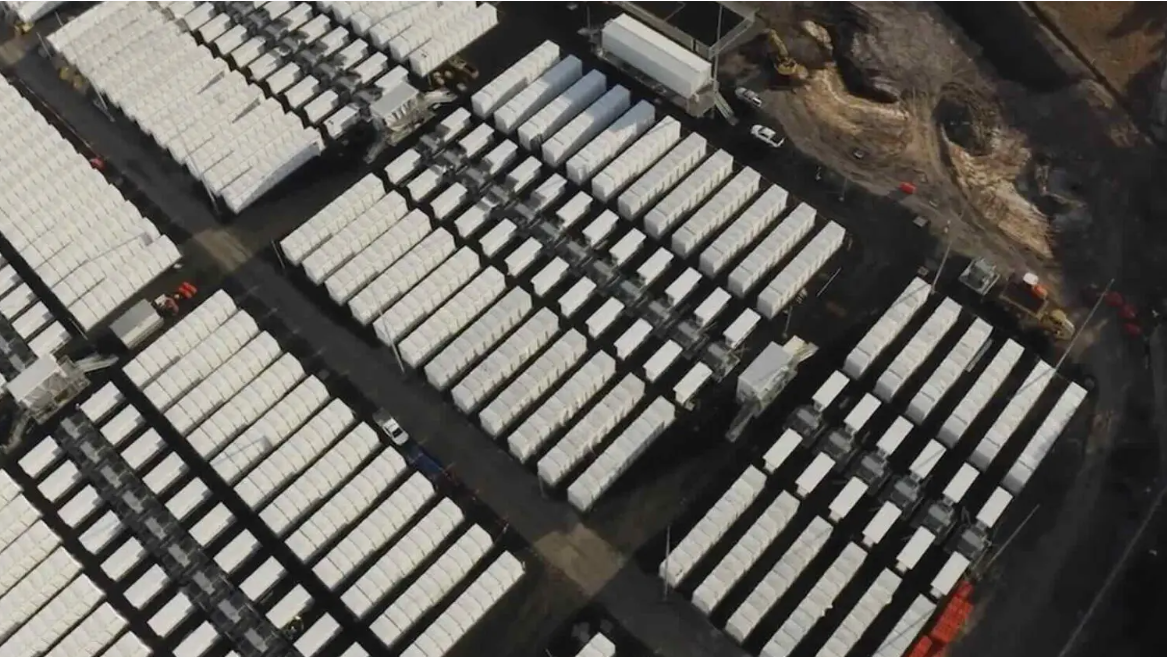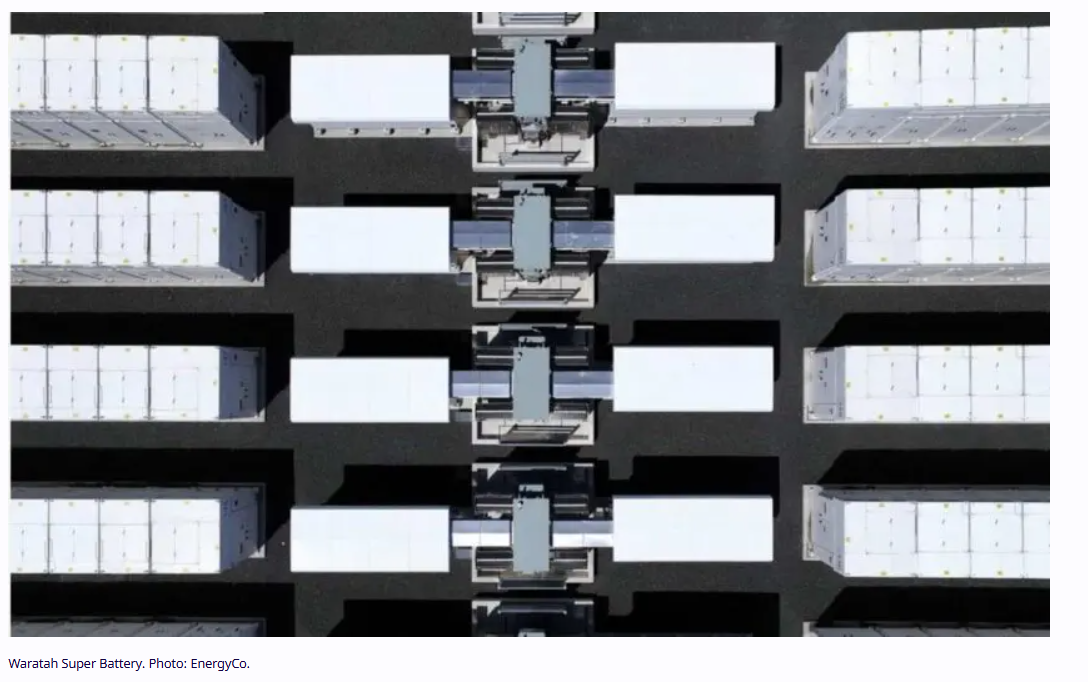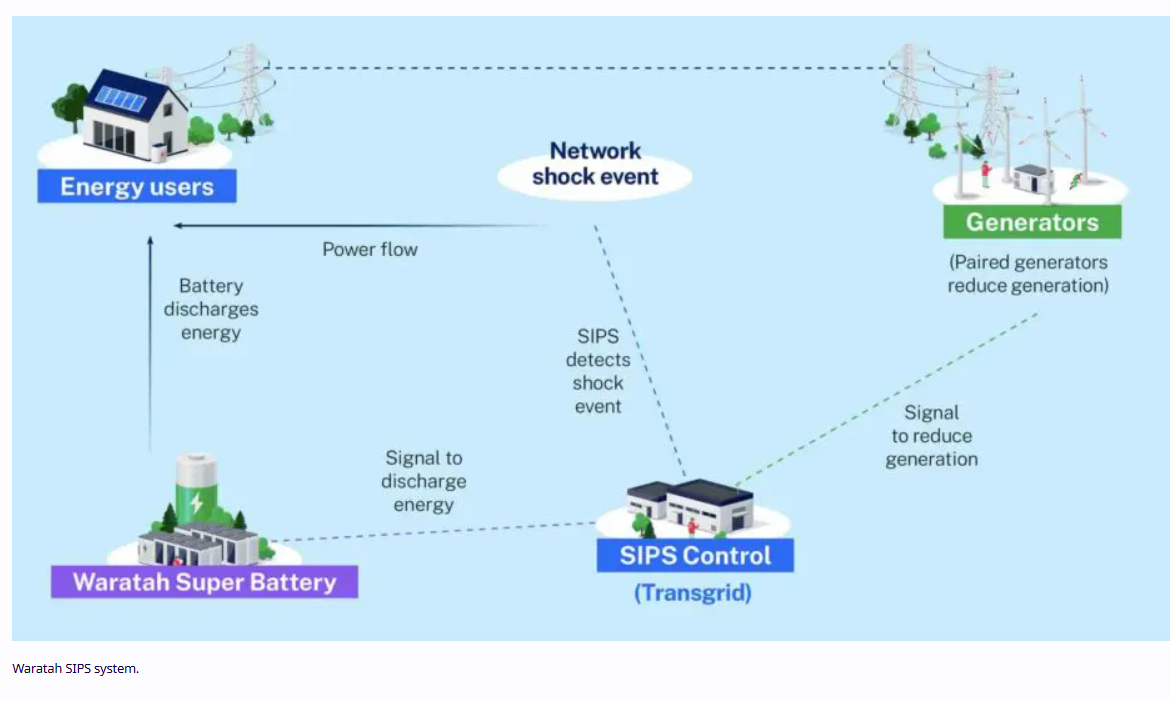Why Australia’s biggest coal state is so excited about having the world’s most powerful battery

The state of NSW, at least those parts thinking about the transition from coal to renewables, is in a state of excitement. It now plays host to the world’s most powerful battery, which has been partially commissioned, and is rolling out a new solution – a giant battery shock absorber – that has never been seen at such scale.
And the rest of the industry is excited too. Many, particularly the big wind, solar and battery players like Andrew Forrest’s Squadron and Windlab, France’s Engie and Germany’s RWE, want to see such batteries replicated across the grid.
They see it as the only way, and a much more economic way, to get over the cost and social licence hurdles and poor decisions that have limited grid capacity in some of the country’s most attractive wind and solar resources.
Big batteries have been changing the way people think about the grid since the first large scale one was built in 2017, the Tesla big battery at Hornsdale. It is now a solution for frequency control, synthetic inertia, system strength, soaking up solar, energy arbitrage, and a lot more.
Nearly everything about the Waratah Super Battery speaks to the pace and scale of the transition from coal to renewables in Australia, and in NSW in particular, which still retains more coal capacity than any other state, but at least has been realistic about putting in a plan to transition from fossil fuels to renewables in little more than a decade.
The Waratah battery is being built – like many big batteries – at the site of a former coal-fired power station, in this case Munmorah. Most others are being located at such facilities to take advantage of the grid infrastructure left behind.
At 850 megawatts (MW) and 1690 megawatt-hours (MWh), Waratah will not be the biggest battery every built in terms of storage, but it is for now the most powerful battery (the 850 MW power part) to be built in Australia, and anywhere in the world according to the NSW government owned EnergyCo.
And it will have a unique role in the market, acting as a giant shock absorber to allow more capacity to be transported across the main transmission lines feeding the major load centres.
It is paired with the Metz solar farm and the Sapphire wind farm, and will soon also be paired with the Tumut pumped hydro facility. Its contract with the NSW government, via EnergyCo and Transgrid, known as the System Integrity Protection Scheme, came into effect late last week, as we reported here, albeit for around half of the ultimate capacity.
Transgrid says it has invested $16 million in the SIPS control systems, which it says is the largest automated scheme of its kind in Australia, and monitors 36 transmission lines across NSW in real time to detect any overloads and direct any responses.

“In network contingency events such as lightning strikes, the SIPS acts as a shock absorber to return the network to a stable condition and maintain continuity of supply for consumers,” says Transgrid’s head of delivery Jennifer Hughes.
“It’s like an insurance policy for NSW and the whole system is triggered automatically, making it fast and reliable in responding to a system event or fault.”
EnergyCo chief executive, Hannah McCaughey, says the Waratah battery is a fantastic example of how new technologies can bring new solutions to the grid transformation occurring here and around the world.
“This is the first of our projects to go into operation, and there are many more to come,” she said. “We look forward to more milestones in our renewable energy zones this year.”
For the battery project owner, Akaysha Energy, it is also a landmark, given it is its first battery project of any type, and its delivery needed to overcome flooding, bad weather, numerous delays, and challenges with the connection process, not to mention the eventual bankruptcy of its battery supplier, the US-based Powin.
The project was supposed to be delivered in full by May, in preparation for the expected closure of the country’s biggest coal generator, the 2.8 GW Eraring facility, just up the road.
But the extension to Eraring, underwritten for two years by the state government, enabled the timelines to be loosened. Transgrid applied in March for approval to defer payments to Akaysha because of the delay. The document is heavily redacted, as are most references to the contract details, including its value.
Nick Carter, the Akaysha CEO, says it has been a collective effort that has involved delivery, engineering, commercial and legal, technical integration, grid modelling, software, operations and trading. He paid credit to key partners CPP, Hitachi Energy and Wilson Transformer Company.
Carter spoke at length to Renew Economy for the latest episode of the Energy Insiders podcast that was published on Monday. In it, he describes why the battery and its SIPS contract were so important.

“If you think about it in a simplistic way, the lines that come from, say, the (Central West Orana) REZ to Sydney, across to the Sydney main grid, or ring, if you will, which is Newcastle, Sydney, Wollongong, a 330 KV ring, which supplies a large amount of load.
“The issue, of course, is that you can’t under all conditions, evacuate all of the renewables from Orana zone down the existing double circuit line to that load cell. And so one thing that you can do, which is what SIPS allows, is to run those lines harder.
“Because at the moment, of course, you would run them both up to their 50% rating. And when one line trips, the other one goes to up to 100% and and everyone’s happy, but that means you can only ever evacuate a certain amount of power.
“So, in order to get more, you might run them all up to, say, 80% on each line each for example, to get that wind and solar into Sydney. But that means if one of the lines trips, you’ve got a problem, because you’re going to have to overload a single line for a period of time.
“And maybe that overloading actually leads to both lines tripping, and all of a sudden, New South Wales or Sydney doesn’t have load and that’s the kind of problems they (Transgrid) are dealing with.
“So what SIPS is doing is sitting there on standby. Both lines would get run harder under certain conditions. And when one of them trips … the two paired assets (Metz and Sapphire) are simultaneously ramped down as the Waratah Super Battery ramps up to maintain that second line from from tripping off, and keep the power system stable.
“Then Transgrid works … to either get that second line back up or reconfigure things. And obviously, in conjunction with AEMO, get the system stable back to a place.”
The NSW climate change and energy minister Penny Sharpe – who knows that at least three of the remaining four coal-fired power stations will be shut down in the next decade, and perhaps all of them – approves.
“The Waratah Super Battery is one of the biggest in the world. As it comes online, it will help power our homes and businesses while stabilising the grid to avoid blackouts. It’s a crucial addition to our energy system.”
More information: https://reneweconomy.com.au/why-australias-biggest-coal-state-is-so-excited-about-having-the-worlds-most-powerful-battery/


